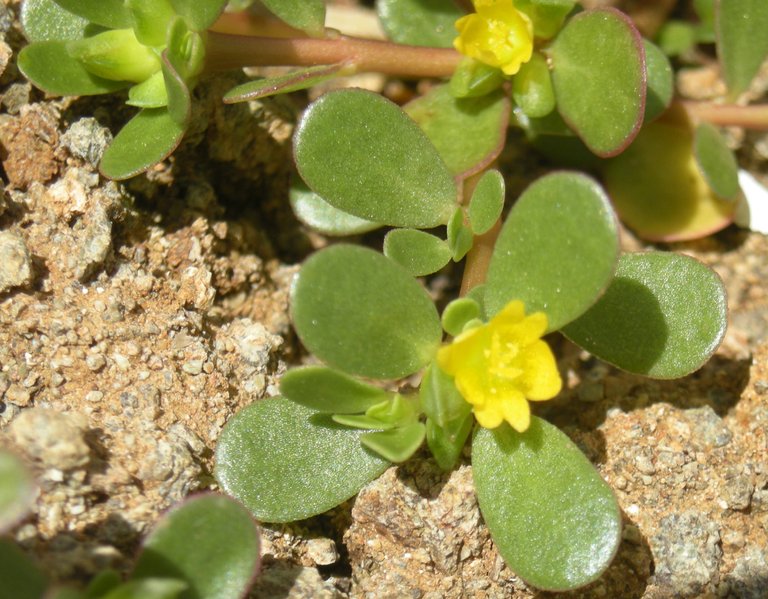
Purslane, also known by a bevy of other names, such as pigweed, red root, and hogweed to name a few, is often considered a weed here in the United States; however, it was originally cultivated as a leafy vegetable in the regions of India and Persia. Today it grows in several countries.
You’ve probably seen purslane growing wildly if you live in the United States. It has rounded broad leaves and will sometimes sprout yellow flowers. Even if you have seen it and are familiar with its appearance, there’s a good chance you are not aware of the nutritional value and health benefits associated with this powerful plant.
Most Americans will remove purslane from their yards or gardens because they mistakenly believe it is nothing more than a weed. However, it can be cultivated as a vegetable. The leaves of the plant are crunchy when eaten and have a lemon-like flavor. They can be harvested and used on a sandwich, in a salad, or as a substitute for other vegetable on the dinner plate, like spinach.
Health Benefits:
Antioxidant—rich in Vitamin A, B-Complex, and Vitamin C, purslane is packed full of powerful antioxidants.
Omega 3—purslane is also rich in Omega 3 fatty acids. As a matter of fact, purslane has more Omega 3 fatty acids than traditional vegetables familiar to Americans.
Metabolic Booster—purslane has a low-calorie count, a delicious and enjoyable flavor, and boosts your metabolism with sufficient nutrients for the entire body.
Stimulates Red Blood Cell Production—purslane is also rich in copper and iron, which allows it to stimulate red blood cell production, as well as assist with the improvement of circulation.
Improves Eye Health—the presence of Vitamin A and beta-carotene in purslane make it an excellent supplement for addressing the healthcare of your eyes.
Improves Skin Health—the Vitamin A content in purslane also assists in reducing premature aging, wrinkles, and inflammation. Purslane can also assist with progress of healing skin, scars, and other blemishes.
Improves Bone Health—purslane is packed with plenty of powerful minerals, such as magnesium, iron, and calcium, all of which help improve the overall health associated with bone growth and maintenance.
Low Calorie Count—due to the low-calorie count associated with purslane, it makes an excellent supplement to include in the weekly dietary plan.
Improves Heart Health—the Omega 3 fatty acids combined with the presence of potassium makes purslane a powerful supplement for improving heart health and reducing bad cholesterol levels.
Cancer Prevention—the minerals, nutrients, vitamins and antioxidants found in purslane make this plant an excellent addition to the daily diet as it may help prevent the onset of certain types of cancer causing contaminants, or reduce free radicals within the body itself.
Purslane is something you can grow yourself in the garden, and add to your diet rather easily. With the potential health benefits outlined here, it just makes sense to give purslane a try.
What do you grow in your garden? Do you have any unconventional plants, fruits, or vegetables in your garden? If so, leave us a comment below and let us in on your secrets…we would love to hear from you!
Thank you. I also eat plantain. It has many benefits also. I just posted an article about the Goji berry and its usefulness in weight loss.
Goji berries grow great in a greenhouse! We had two plants which took over about a quarter our greenhouse and they give fruit for quite a while. They taste a bit like small tomatoes raw.
The list is too long for what we grow in the garden, but what we allow to grow elsewhere is even longer! We love purslane, dandelion, poor mans pepper, wild blackberry, wild grape, palm and heart of palm and so many more. And the wild stuff requires me to do nothing except harvest it..
I'm so used to pulling it out and tossing. Guess I'll have to take a bite.